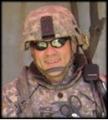From the NYT webpageSo it sounds like we may be leaning toward a policy that only reinforces one of the central concerns mentioned in Matthew Hoh's resignation letter. Namely, that this war has...WASHINGTON — President Obama’s advisers are focusing on a strategy for Afghanistan aimed at protecting about 10 top population centers, administration officials said Tuesday, describing an approach that would stop short of an all-out assault on the Taliban while still seeking to nurture long-term stability.
Mr. Obama has yet to make a decision and has other options available to him, but as officials described it, the debate is no longer over whether to send more troops, but how many more will be needed. The question of how much of the country should fall under the direct protection of American and NATO forces will be central to deciding how many troops will be sent.
At the moment, the administration is looking at protecting Kabul, Kandahar, Mazar-i-Sharif, Kunduz, Herat, Jalalabad and a few other village clusters, officials said. The first of any new troops sent to Afghanistan would be assigned to Kandahar, the Taliban’s spiritual capital, seen as a center of gravity in pushing back insurgent advances.
Our students at SAMS, who have been looking at the problem closely over the last 10 months, in coordination with planners on the ground, have seen the same problem and came to essentially the same conclusions that the McChrystal report came to. Were their own ideas to be implemented, the strategy would focus on winning in the villages by focusing development and building good governance at the local level in order to rebalance the role of local / tribal leadership with that of the central government...."violently and savagely pitted the urban, secular, educated and modern of Afghanistan against the rural, religious, illiterate and traditional. It is this latter group that composes and supports the Pashtun insurgency."
One can argue whether we should continue there at all, but if we are to continue, we need to ensure that understanding of the situation on the ground as it exists on the ground drives the strategy.







Bookmarks